The second inaugural match of the Campeones Cup took place last Thursday at the Mercedes-Benz Stadium. At their own home, the MLS Cup champions, Atlanta United, welcomed the winner of the Campeón de Campeones, Club América.
After a struggling start to the season, American-based side Atlanta United were getting themselves back to their best. They have qualified for the final of the US Open Cup and placed second in the Eastern Conference with a match in hand. With such high confidence among the squad, Atlanta were confident to keep their second trophy in their history at the United States.
Club América, on the other hand, have gone on an unbeaten run from the start of the season. This included their victories on the penalty spot against Tigres UANL in the Campeón de Campeones and Houston Dynamo at the Leagues Cup. This set up another clash with Tigres next Wednesday to decide the first finalist of the Leagues Cup. Having secured the first trophy of the season, they wanted to take home the Campeones Cup and create a momentum for a very positive season.
This tactical analysis will provide an analysis of the 3-2 victory of Atlanta United over Club América. Meanwhile, using statistics, we will point out what went wrong with América’s tactics over Atlanta’s tactics.
Lineups
Frank de Boer fielded his strongest 4-3-3 lineup with no noticeable absences from injuries. The only big change that the Dutch manager made was choosing Alec Kann to start in goal rather than the veteran, Brad Guzan. He also left Miles Robinson, who was having a great inaugural season in the MLS, Justin Meram and Héctor Villalba on the bench.
Atlanta United (4-3-3, from left to right): (GK) Alec Kann; (DF) Florentin Pogba, Leandro González Piréz, Franco Escobar, Julian Gressel; (MF) Emerson Hyndman, Jeff Larentowicz, Darlington Nagbe; (ST) Dion Pereira, Josef Martínez, Gonzalo “Pity” Martínez.
Former Mexico manager Miguel Herrera also brought his strongest side to the US for this match. In the roster, there were Mexico international Paul Aguilar, former Vitesse player Renato Ibarra and Roger Martínez. An MLS familiar face Giovani dos Santos also travelled along with the squad but eventually didn’t appear on the bench.
Club América (4-2-3-1): (GK) Óscar Jiménez; (DF) Jorge Sánchez, Carlos Vargas, Bruno Valdez, Paul Aguilar; (CM) Guido Rodríguez, Sebastián Córdova; (AM) Andrés Ibargüen, Roger Martínez, Renato Ibarra; (ST) Henry Martín.
Atlanta’s style of play
One of the most interesting in De Boer’s tactics from this match was how flexible the defenders were when they involved in the build-up. As mentioned, they entered this game playing with a back four. But at times, there were only three central defenders circulated the ball between each other with some help from Larentowicz. Escobar moved into the right half-space and Pogba stuck to the left-hand side.
The veteran midfielder usually dropped deep in between González Piréz and Pogba, while offering to take the ball and dribbled up the pitch. He played in a similar role to the half-back, which seemed quite unnecessary when you already had a three-man build-up. A possible way that de Boer could still make the most out of this strategy is to look at Quique Setién’s Real Betis.
Betis also played with a back three and a holding midfielder in Javi García last season. But García wouldn’t drop too deep into Betis’ half as he could cut off the connection with two central midfielders in front of him. While doing so, he chose to position himself in the middle of the circle and maintained two passing triangles with three centre-backs. Larentowicz could mirror García’s positioning and way of involving in the build-up, which will be very efficient for Atlanta in the near future.
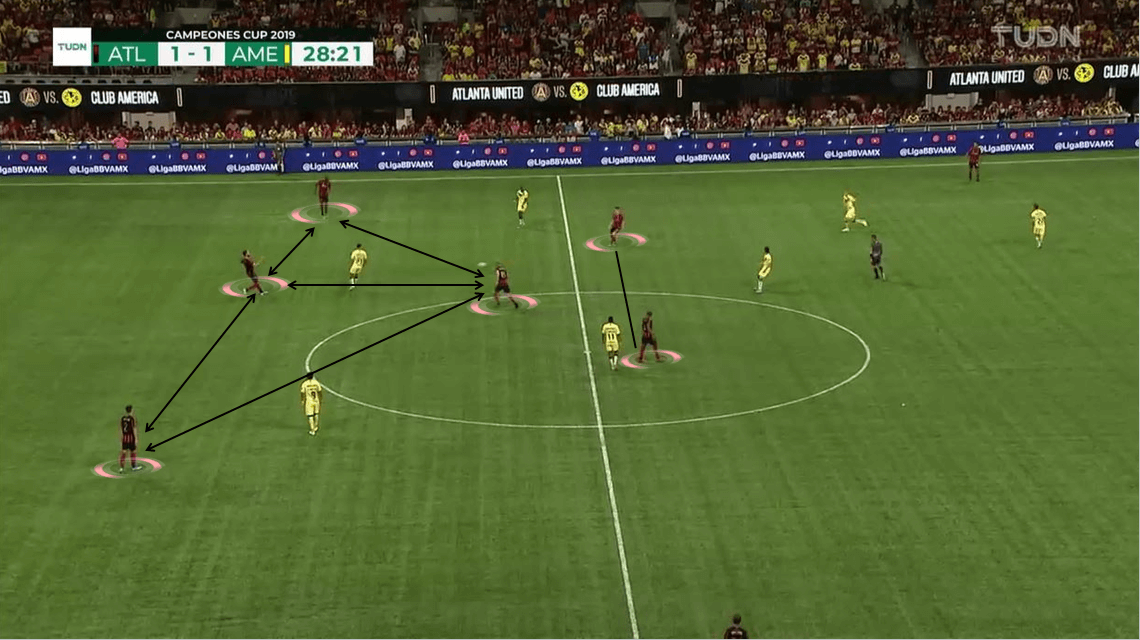
The central midfielders, Hyndman and Nagbe, could also come short and provide possible passing options. They were the link between the build-up and the strikers upfront, taking part in circulating the ball with high efficiency. As mentioned, since Larentowicz tended to drop deep into his half, they had to move along as well. They aimed to keep their support range as close to him as possible while limiting the number of risky passes inside the build-up.
These two also had the license to dribble with the ball, narrowing their distances between them and the attackers. It allowed Atlanta players to recycle possession and still move the ball up the pitch at the same time. This was one of the reasons that contributed to their high passing accuracy rate, which stood at 78%.
While the build-up was occurring, Gressel usually moved high up the pitch. The German player’s movement was not a surprise as he is an attacking full-back, while capable of playing in other positions on the right-hand side. He constantly does what he did best during this season and even when Tata Martino was still in charge. Upfront, Pity Martínez cut inside and occupied the role of an attacking midfielder, leaving the right flank for Gressel.
But it was Pereira’s movement that really caught the eye. He was intended to be used as a winger in Atlanta’s 4-3-3. In the match, the English prospect constantly joined the defensive structure and turned it into a back five. Usually, Gressel didn’t have the pace to recover from his attacking position. This left Pereira’s opposite side vulnerable.
De Boer dealt with this by dragging him down into a left wing-back, pushing Escobar into Gressel’s position. Atlanta now would defend with a back four and when the German versatile player returned, they defended with a back five. Also, when one of the players decided to step out of the shape, there will be a teammate to fill in that position immediately. They covered every possible gap that América could capitalise for their positional attacks.
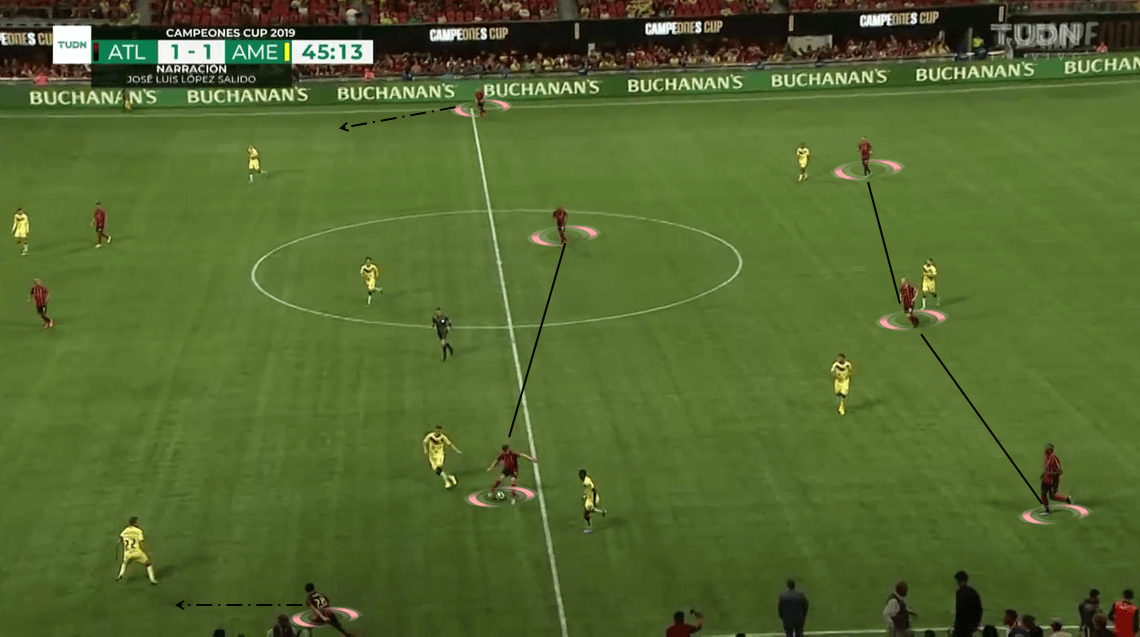
In attacks, he would use his pace and off-the-ball movements to drag the defenders out of his position. It created spaces inside the left half-space and allowed Hyndman or Martínez to move in. Atlanta’s opening goal of the game came from a very similar situation.
After Nagbe dribbled with the ball, Pereira cut inside and vacated the left half-space. This dragged one of the centre-backs out of his position and Hyndman capitalised that. In the shot below, we can also notice that Martínez could even get involved but the Venezuelan striker left it for Hyndman. Pereira received the ball and made a first touch pass into Hyndman’s run. The Bournemouth loanee capped off an exquisite move made by Atlanta players.
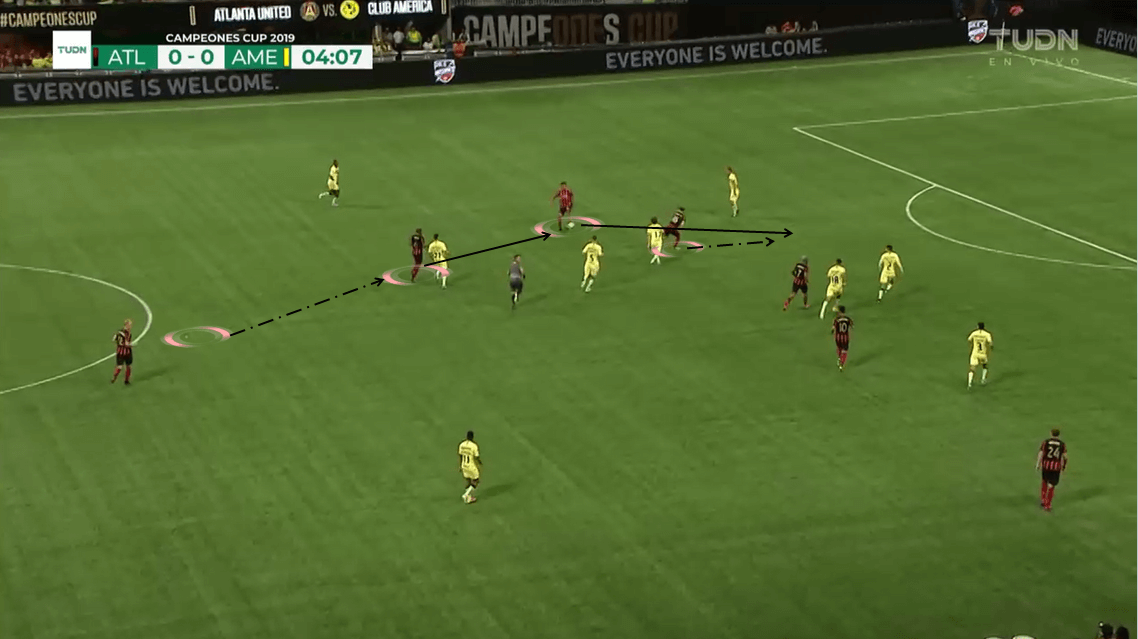
Atlanta also relied on quick, short combinations and smart positioning when they built their attacks. Similar to their build-up principles, the players kept their support ranges close to each other. In the shot below, Pereira positioned himself in free space and acted as an intermediate between Pity Martínez and Josef Martínez. He received the ball from the former River Plate midfielder and laid it off to Josef, who was making a run into that space also.
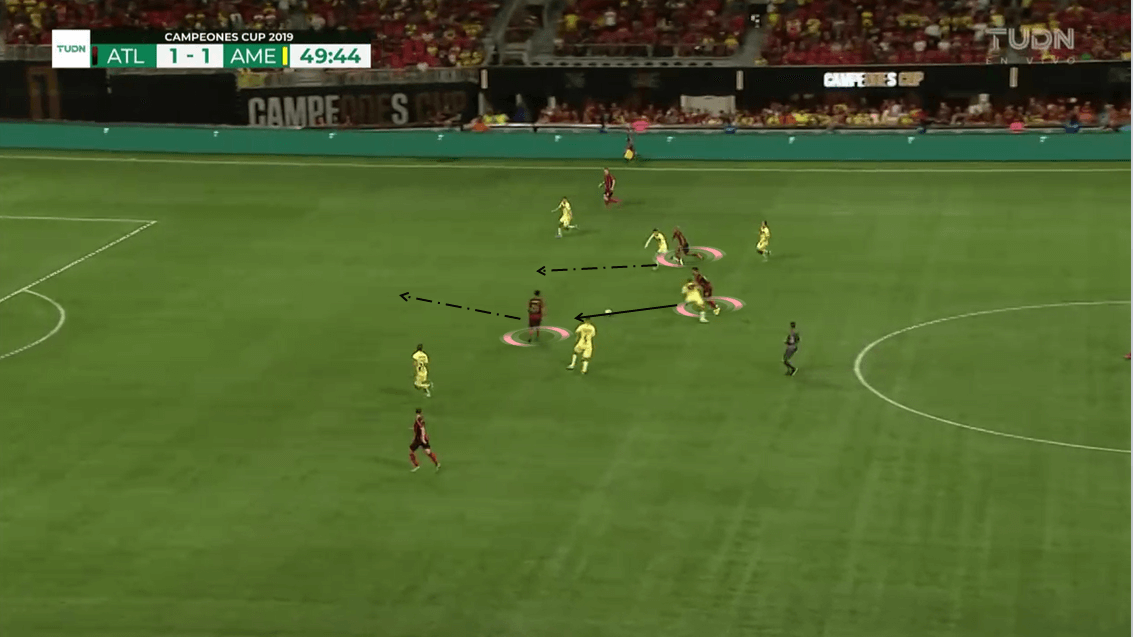
When Pereira was subbed off in the second half, Meram filled in his position and had a few decent plays, which included the situation below. América’s defence was staying compact and leaving gaps across the area. The reason for that was because Valdez got sent off earlier and they had to find a solution to it.
Return to Atlanta’s situation, Nagbe played a ball towards Pity, who spotted Meram in a free space on the left-hand side. With a through ball that bypassed the defensive line, the Iraqi winger received the pass and made a run up the pitch. Unfortunately, his cross was deflected out for a corner.
Meram has had a very decent first season with Atlanta and contributed to some of the team’s important goals. He is considered a valuable addition to the club and de Boer didn’t take the risk of playing him for the whole match. Although Pereira had a good period on the field, he got fatigued when the match reached the last minutes. This allowed Meram to have a few minutes on the field and tried to make his impact.
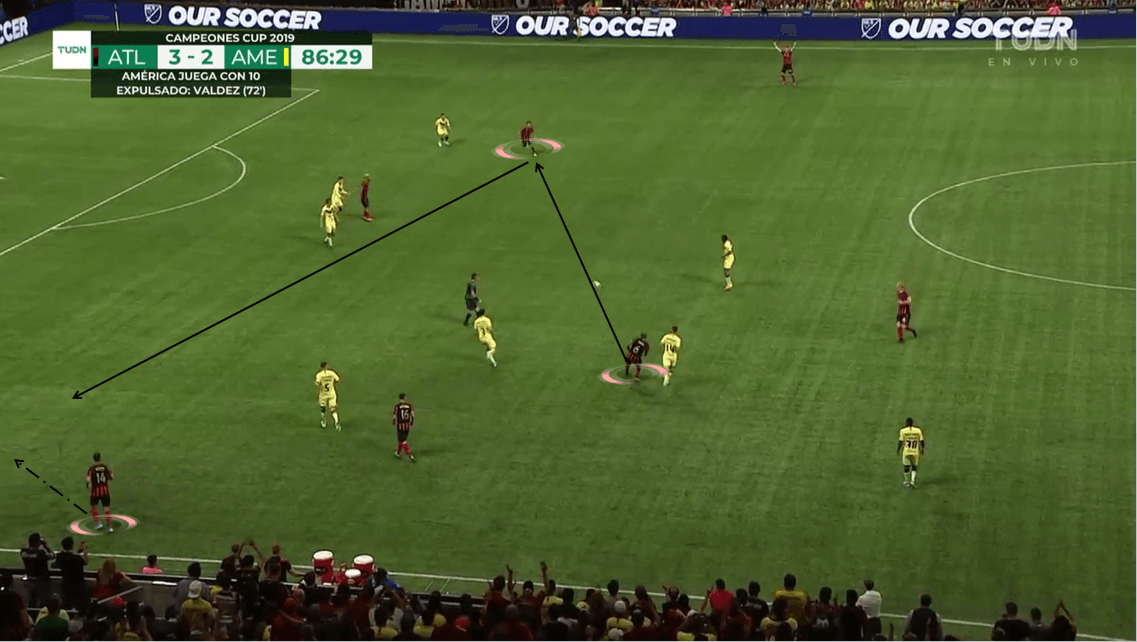
Those short combinations eventually led to Martínez’s second penalty of the game and the goal that sealed the tie. It was, again, Pereira who picked up the pass from Hyndman and he noticed Pogba was in a free space on the edge of the box. He picked him out but the former Saint-Étienne defender was fouled later on.
After striking the penalty to the right side of Jiménez, it was caught. Martínez stepped up to redo what he had failed, this time going for the other side and striking it with force into the middle area of the left side. Although América’s goalkeeper went with the correct side once again, he couldn’t save the penalty.
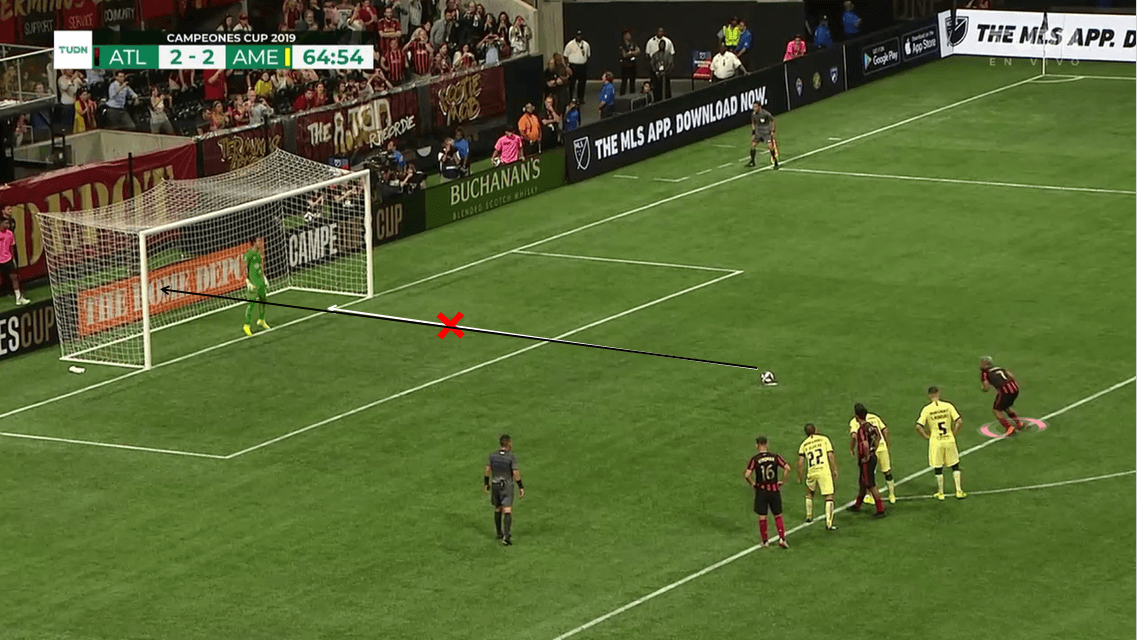
Club América’s style of play
When not in possession, América defended with a clear 4-2-3-1 formation. They defended high up the pitch but also followed the ball and moved down to defend the box. Their structure stretched wide and attempted to fill in any possible spaces that Atlanta could capitalise.
If the home side distributed out wide, two central midfielders, Córdova and Rodríguez, shifted laterally and created an overload with the full-back and the winger. This prevented de Boer’s side from moving closer to their box and creating dangerous chances.
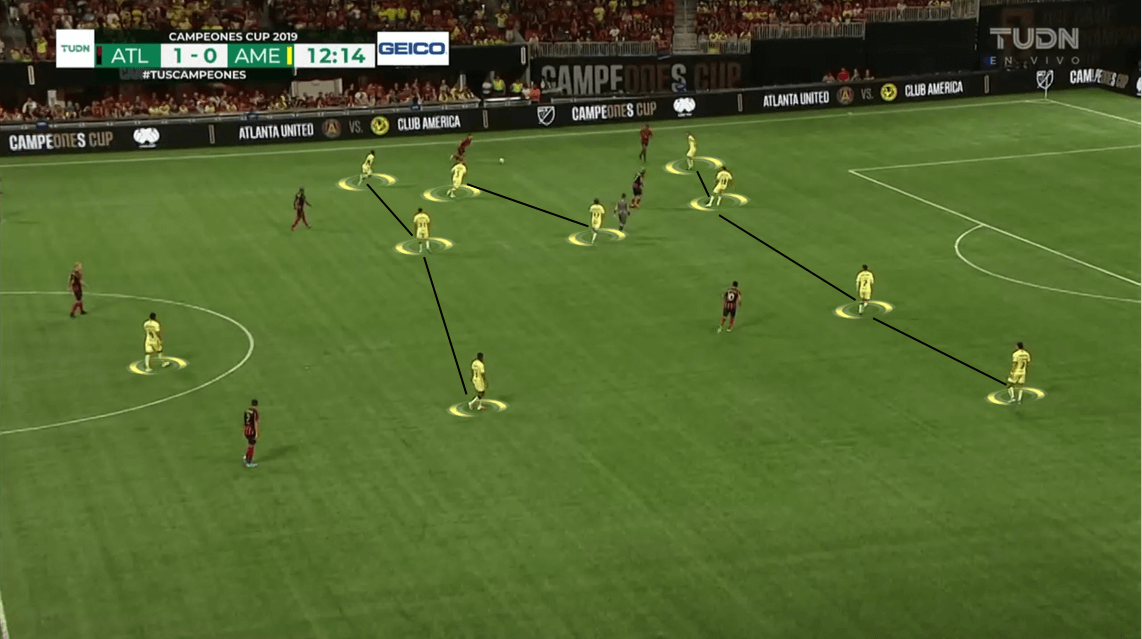
The striker and the attacking midfielders upfront would press Atlanta’s build-up and tried to recover possession high up the pitch. With four players, they have matched the opposition’s number and allowed them to follow each of Atlanta players. Meanwhile, the defensive line stayed high and prevented long balls coming towards them. They combined with two central midfielders to stop the runs of the attackers while not allowing them to sit on the shoulder.
But there was a problem with their strategy. When the defenders moved to the edge of the middle third, it would leave the spaces behind them vulnerable. In the match, Atlanta kept the ball in a stubborn way and did not allow the opposition to tackle it from their feet. It also meant that the efficiency rate of their press would be reduced and Atlanta attackers received the ball quicker.
As mentioned, they used short and quick combinations between América’s defensive lines. With the away side usually defended high, they allowed Atlanta’s pacy players, like Pereira or Martínez, to dribble the ball on their own and approach the 16-yard box.
In attacks, they were extremely quick in transitioning from defence to attack. Using the players who were lauded for their pace, like Ibargüen and Ibarra, they had the chance to beat Atlanta defenders. Roger Martínez could dribble the ball up the pitch, allow both wingers to sprint towards the box and position themselves in a clear space.
Since a few of Atlanta’s players couldn’t recover from their positions very soon, it put more pressure on the centre-backs as they have to do more defensive work. Capitalising this disadvantage, the Colombian striker would place a through ball into their run. At the same time, he had beaten at least one or two of Atlanta’s defenders. The winger would only have to beat Kann in goal with a one-on-one.
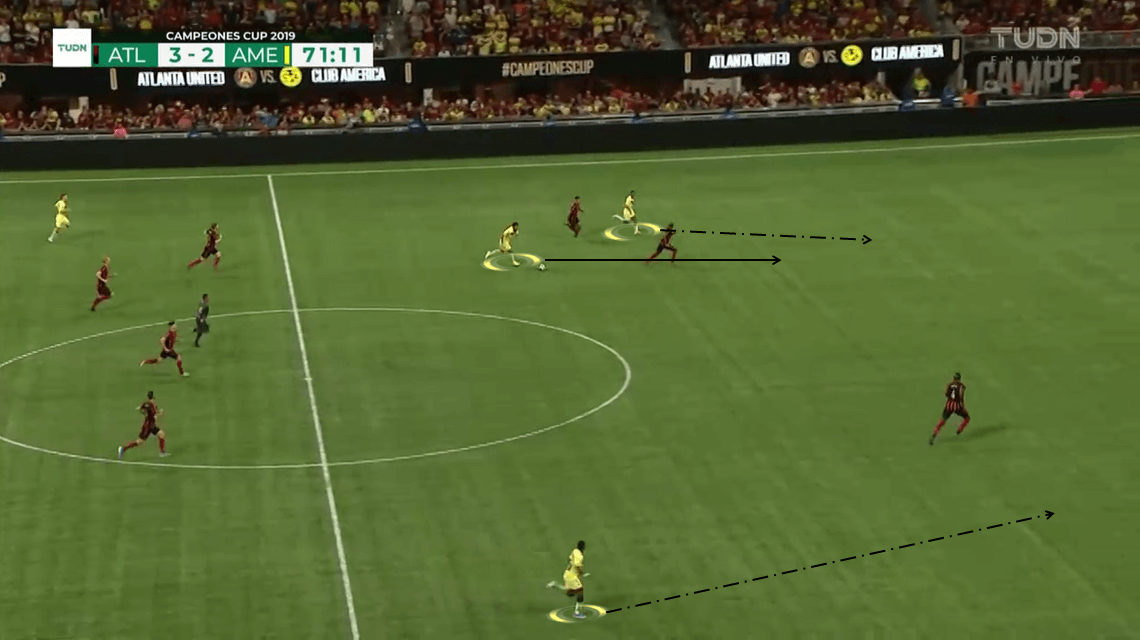
They had a goal which also came from a similar situation. América tended to work the ball into the box and not use many long shots. This allowed more players to approach the box and created passing options for the ball-carrier. Atlanta’s defenders were usually put into a negative state in these situations as they have to focus on the potential receivers.
Meanwhile, on the far side, Ibargüen or Ibarra could sprint and arrive later in the box. They haven’t been in the sights of Atlanta’s defenders as their teammates already attracted them. If Martín or Roger Martínez played a through ball to them, they would have more chance of scoring as with the one-on-one situations. Their equalising goal from Ibarra is a perfect example of this type of play.
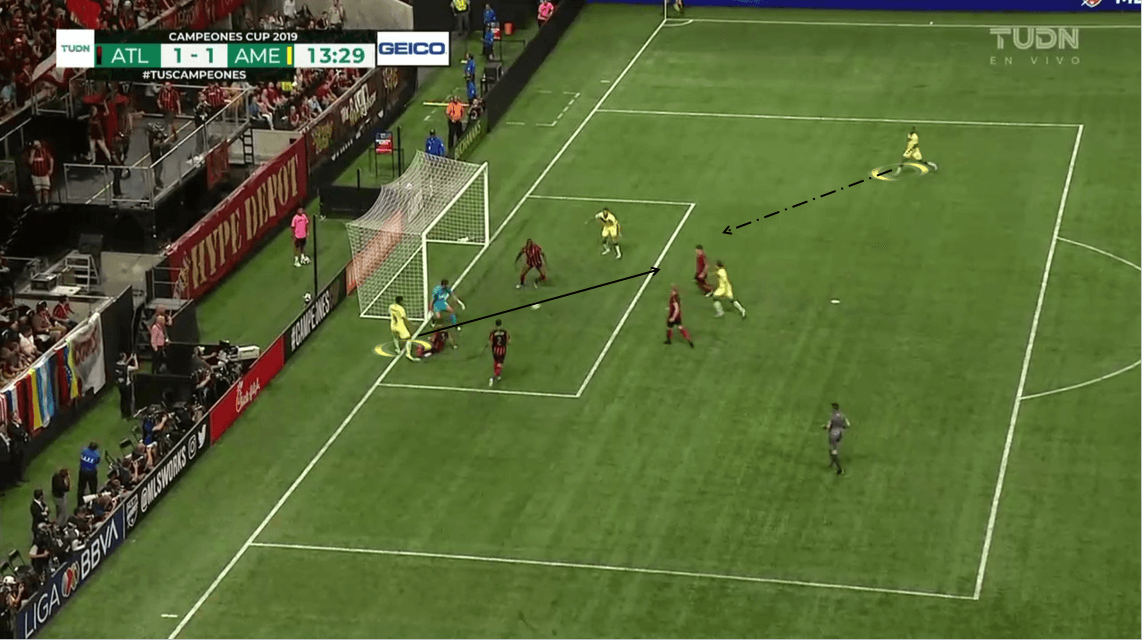
Conclusion
It was a very interesting and exciting match to watch from a tactical perspective. These two teams have contributed their best to create a tie that would be remembered for a long time. Eventually, Atlanta United became the first-ever MLS winner of the competition after Toronto FC fell short last year. They have continued their successful period with a second trophy in the team’s history and heading back to the league with high confidence.
Club América shouldn’t be too disheartened by this loss, although it would allow them to create a quadruple this season. The competition is still very young as this is the second year that it has taken place. There will be more chance for the Mexican side to finally bring the trophy back to their country in the near future. Miguel Herrera and his side need to focus on their domestic league and the Leagues Cup while fixing the problems that they had in this match.

If you love tactical analysis, then you’ll love the digital magazines from totalfootballanalysis.com – a guaranteed 100+ pages of pure tactical analysis covering topics from the Premier League, Serie A, La Liga, Bundesliga and many, many more. Buy your copy of the August issue for just ₤4.99 here.

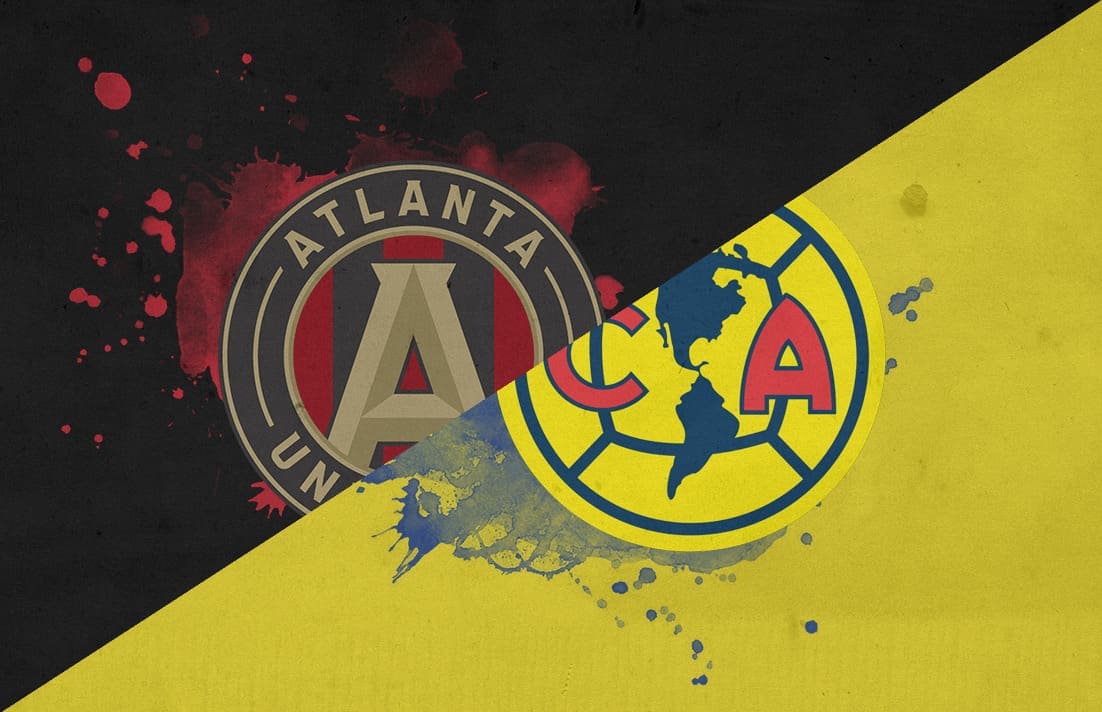
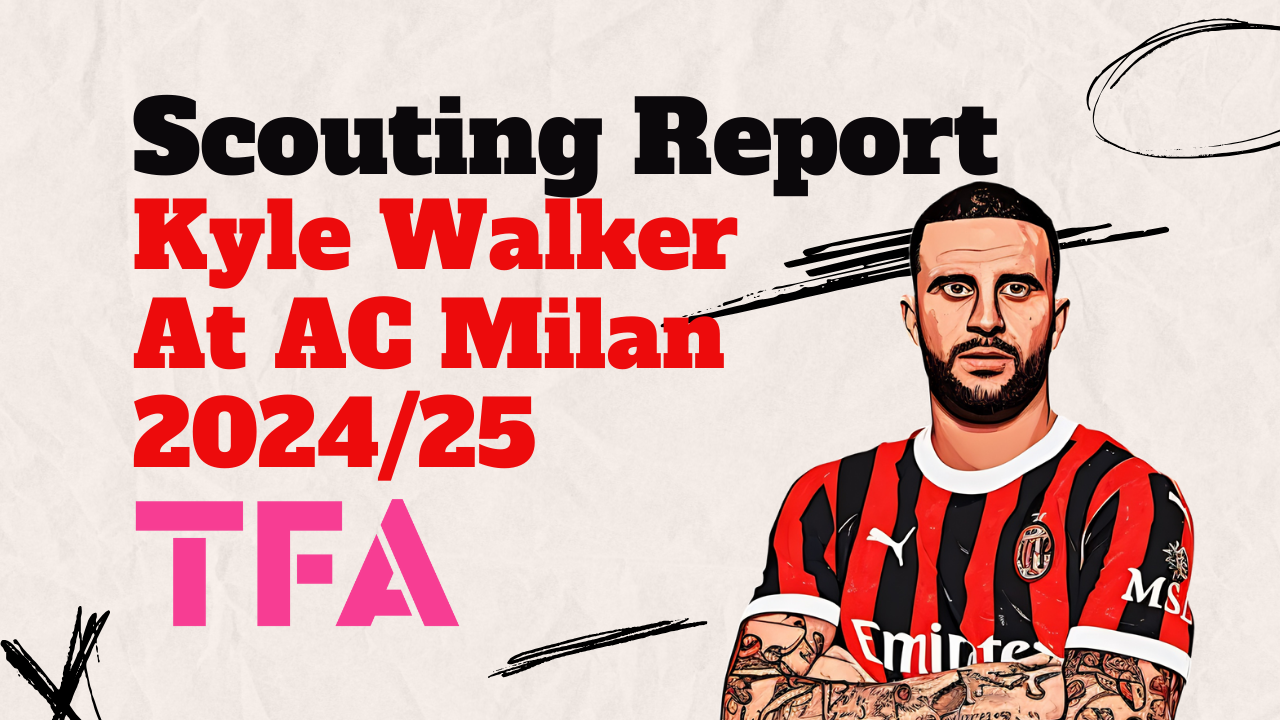
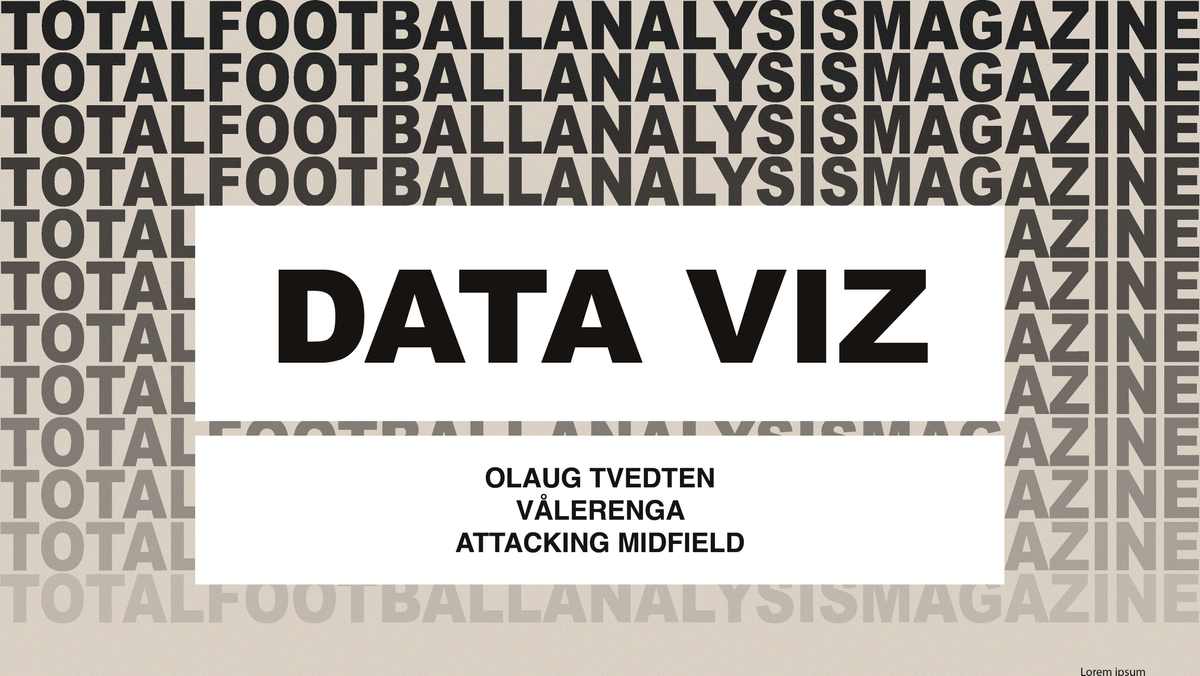
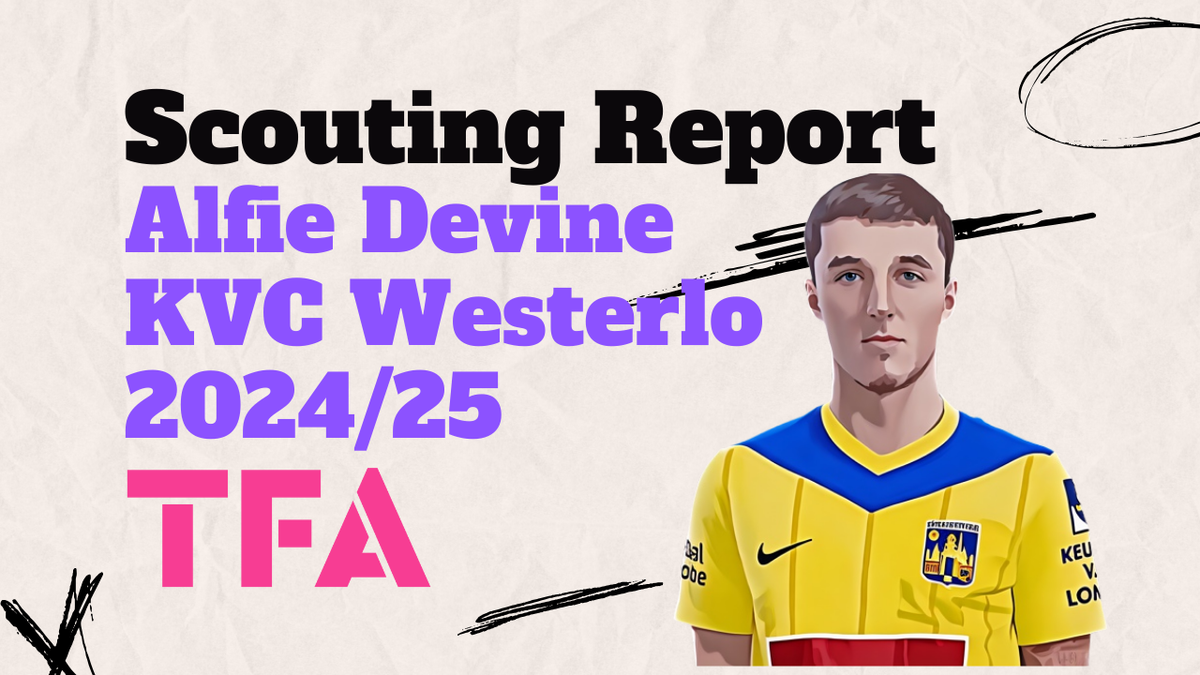
Comments